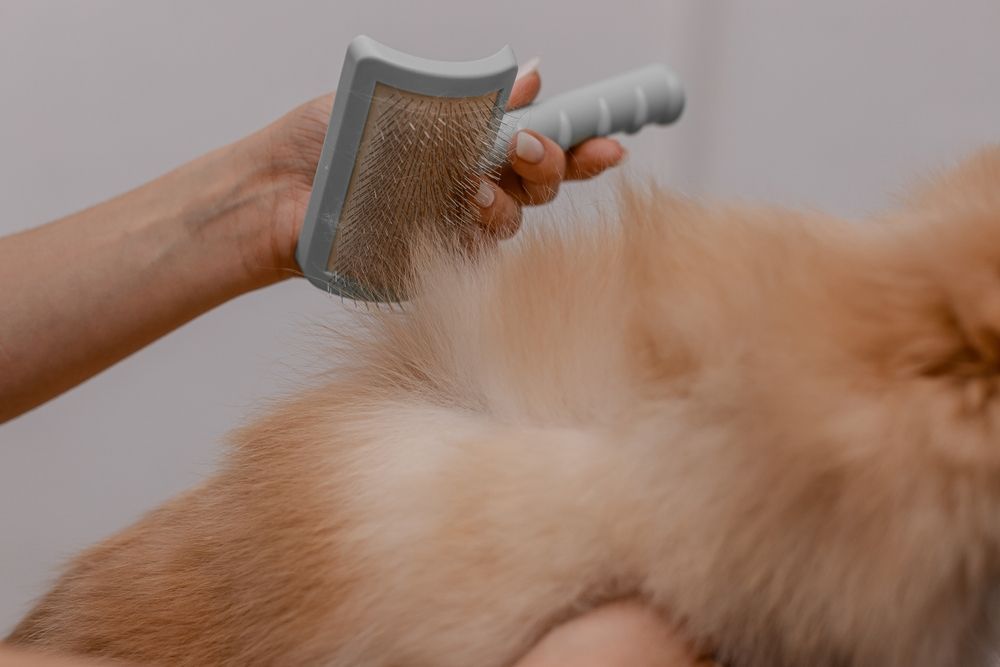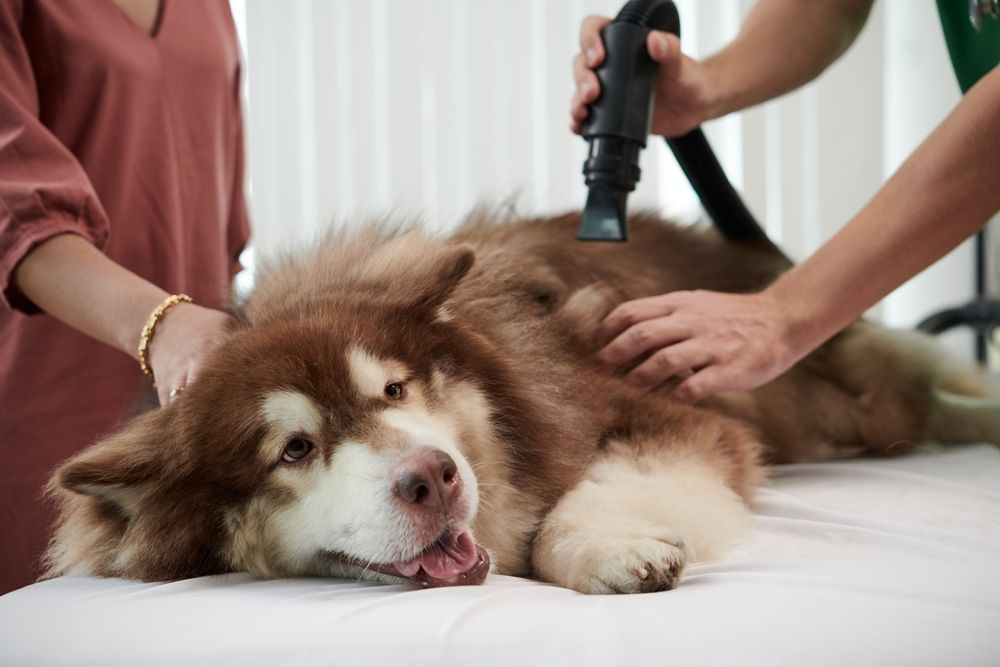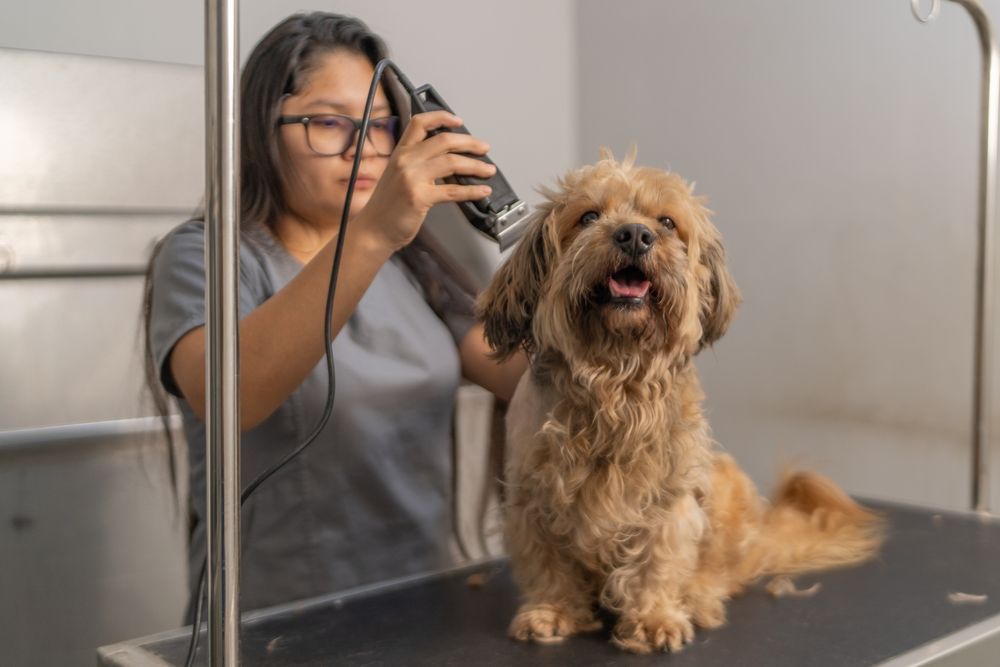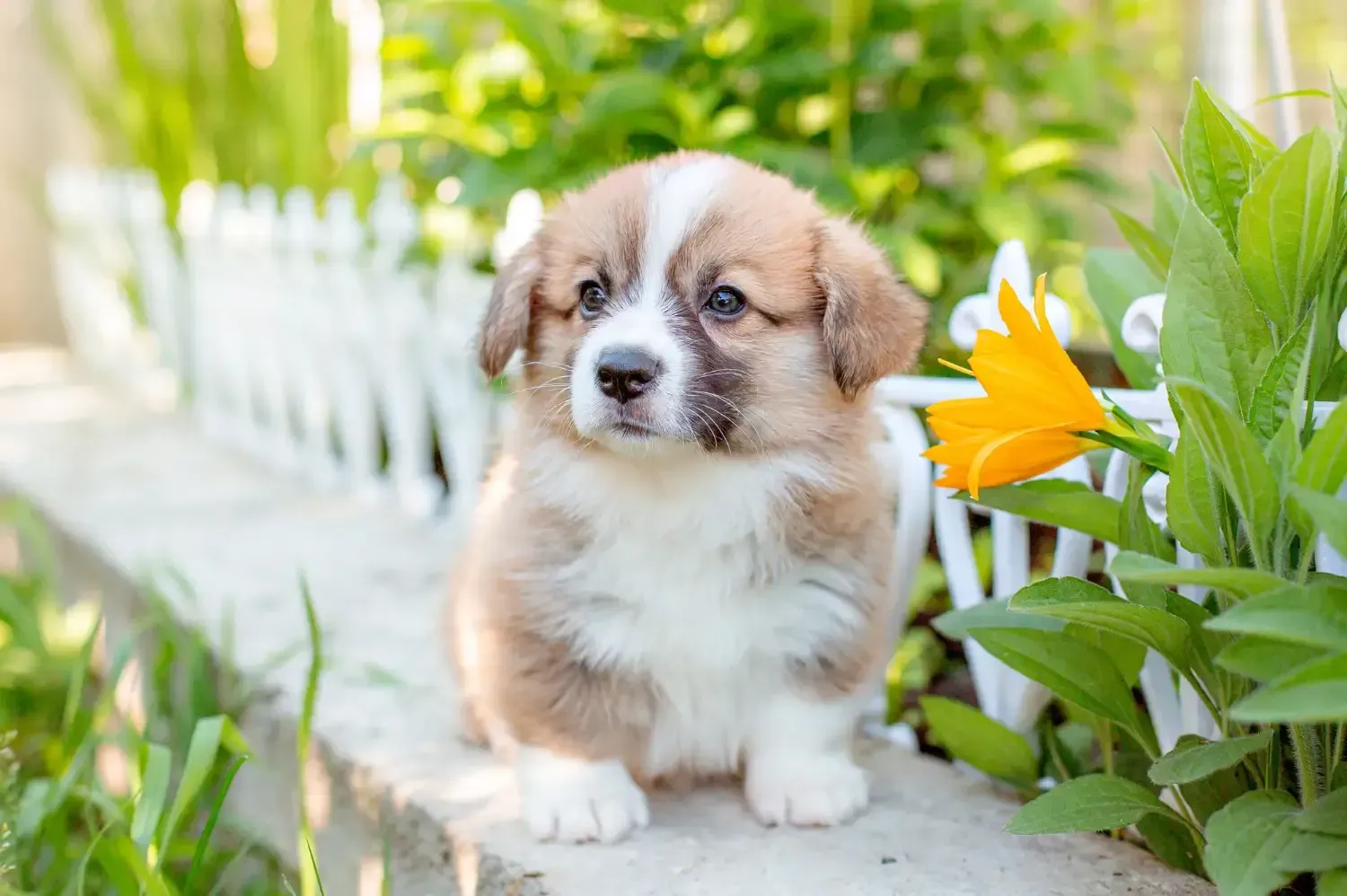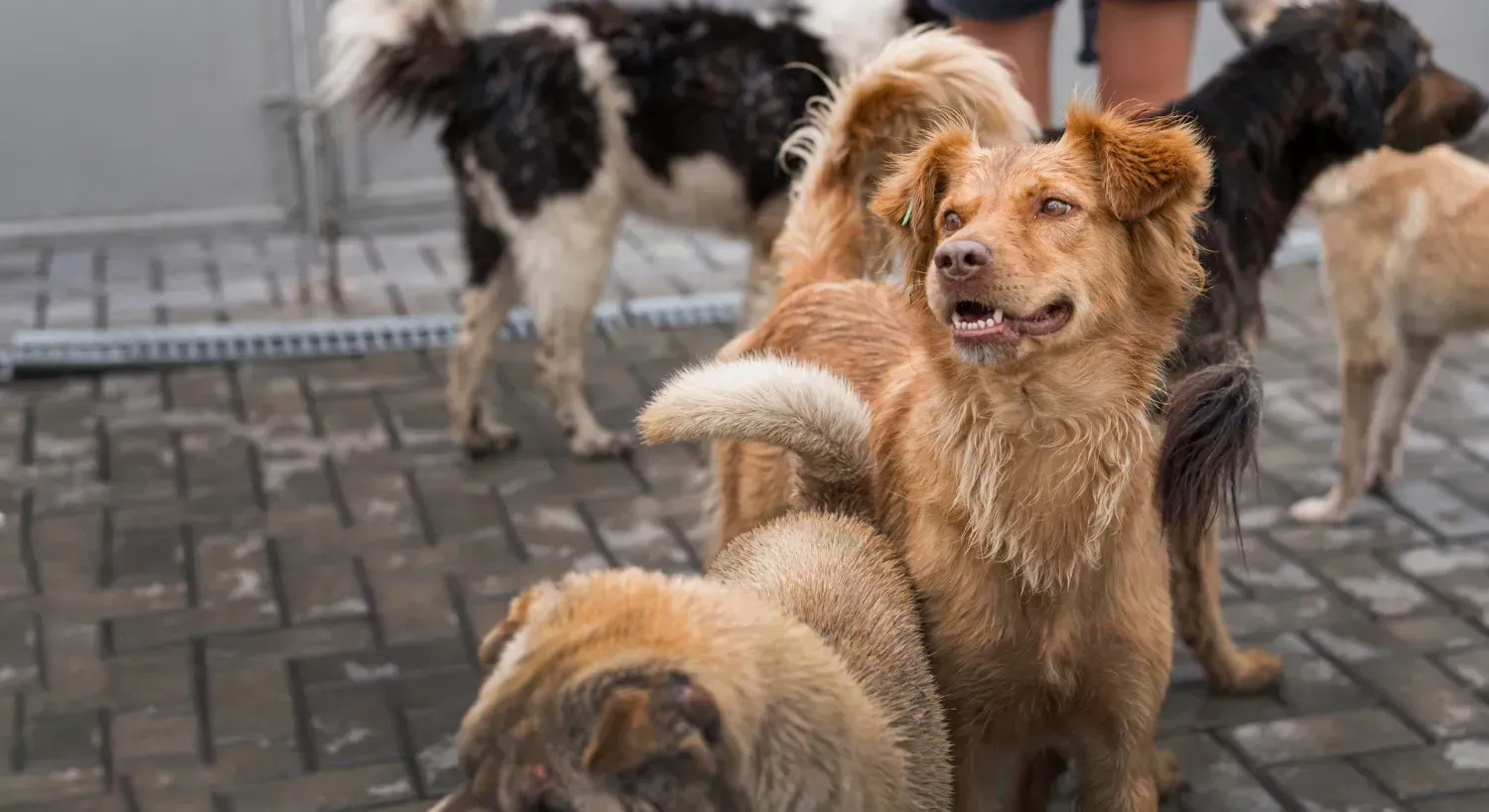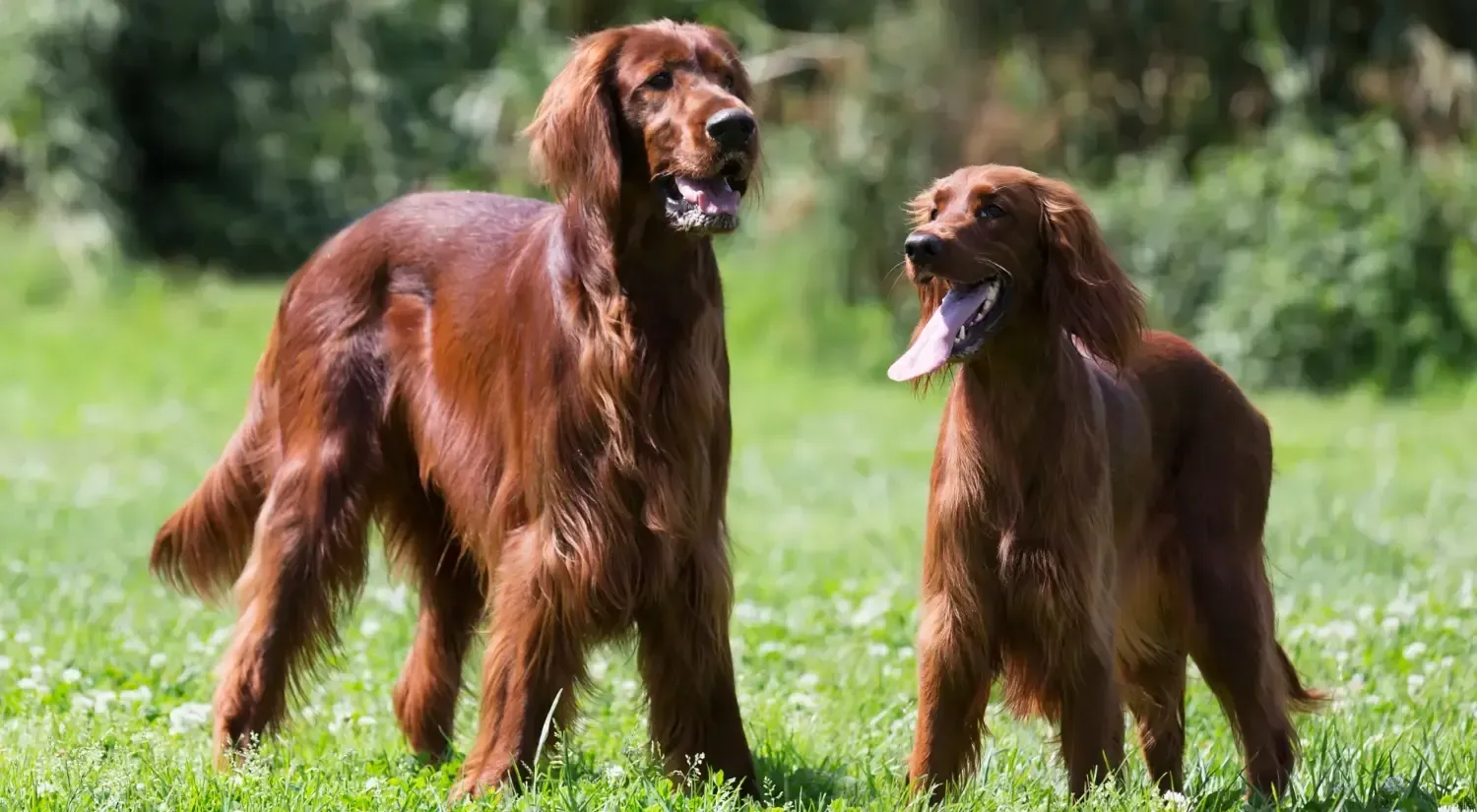How to Bathe a Dog With Allergies Safely: Bath Tips
Dogs with allergies need extra attention during bath time because their skin is more sensitive than most. The wrong products or routines can make itching, redness, or irritation worse instead of better. Common triggers include harsh shampoos, pollen that clings to the coat, food sensitivities, and even seasonal irritants like grass or dust.
When you bathe a dog with allergies, the goal is to calm and protect the skin while keeping the coat clean. A mobile pet groomer can make this process easier by offering gentle techniques and safe products designed to keep pets comfortable.
Understanding Your Dog’s Allergies
Every dog is different, and the first step in caring for an allergic pet is knowing what triggers their discomfort. A veterinarian can help identify whether food, pollen, dust, or grooming products are behind the reaction. Recognizing these allergens makes it easier to adjust care routines and avoid flare-ups.
Typical signs include constant scratching, red patches, hot spots, flaky skin, or even hair loss in irritated areas. Because these symptoms can mimic other conditions, it’s important to get a professional diagnosis before changing treatments or routines.
Once you know the cause, you can tailor the bathing process to your pet’s needs. For example, using an allergy safe dog shampoo helps protect against flare-ups, while careful brushing and detangling reduce stress on delicate skin.
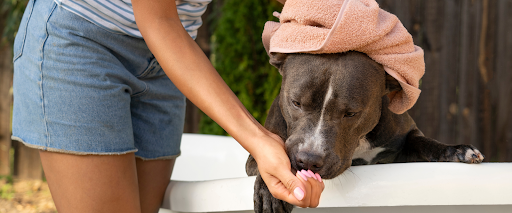
Why Allergic Dogs Need Special Bathing Care
Allergic reactions often show up on a dog’s skin as constant scratching, redness, or even painful hot spots. These flare-ups can make a pet miserable and may get worse if the wrong products are used. Bath time becomes an important step in soothing the irritation rather than adding to it.
Gentle handling, lukewarm water, and mild cleansers help protect the skin and reduce discomfort. When you give your dog a bathe, focus on calming products and avoid harsh scrubbing. When bathing allergic dogs, this careful approach makes a big difference in keeping their coat healthy and their skin more comfortable.
Preparation Before Bathing
Before you bathe a dog with allergies, check with a veterinarian for advice tailored to your pet’s condition. Use a hypoallergenic dog bath product, such as an oatmeal-based or medicated formula, and always choose an allergy safe dog shampoo to avoid harsh chemicals.
Gather what you need in advance: soft towels, a brush, cotton balls for the ears, and a non-slip mat. Brushing out loose fur first, like in a bath & de-shed package, helps the shampoo work better. Keep the setting calm and low-stress, and test the water so it’s lukewarm (about 100°F/38°C), which is ideal for sensitive skin dog grooming.
Step-by-Step Guide to Safely Bathe a Dog With Allergies
Dogs with allergies often need extra attention during bath time because their skin can easily react to the wrong products or rough grooming methods. Scratching, hot spots, or even infections may flare up if you’re not careful.
Choosing the right shampoo and technique helps prevent discomfort and keeps the coat clean. A hypoallergenic dog bath focuses on soothing irritation while still giving a thorough wash. Follow these steps to make the process safe and effective.
1. Pre-Bath Brushing
Before you bathe a dog, take a few minutes to brush their coat. This removes loose fur, dirt, and allergens that may trigger reactions. Use a soft brush to avoid scratching the skin, similar to the gentle care included in a
hand fluff dry & brush service.
2. Protect Sensitive Areas
Place cotton balls in your dog’s ears to prevent water from getting inside. Avoid splashing water or applying shampoo around the eyes and nose. Professional
dog ear cleaning during grooming also helps prevent irritation in these sensitive areas.
3. Wetting the Coat
Use lukewarm water to wet your dog’s coat completely. Begin from the back and work your way forward, leaving the face dry for now. This approach supports sensitive skin dog grooming by reducing the risk of dryness or flare-ups.
4. Applying Shampoo
Choose a vet-recommended formula such as an allergy safe dog shampoo or a
dog bath product. Massage it gently into the coat, paying close attention to itchy areas like the paws, belly, or underarms. Avoid scrubbing too hard, since this can irritate already sensitive skin.
5. Rinsing Thoroughly
Rinse the coat multiple times to make sure all shampoo is washed away. Leftover soap can cause itching or hot spots, which is why a complete rinse is essential when bathing allergic dogs.
6. Face Cleaning
For the face, use a damp cloth or sponge instead of pouring water directly. Wipe carefully around the eyes, nose, and mouth. This method is part of dog grooming basics and keeps sensitive facial skin safe.
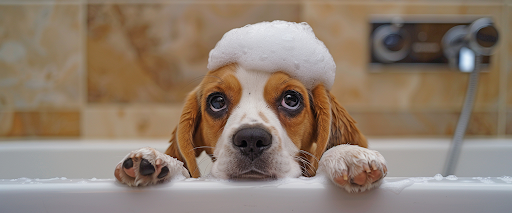
Post-Bath Care For Dog With Allergies
After the bath, it’s important to finish the process with steps that protect the skin and keep your dog comfortable. Proper drying, moisturizing, and monitoring make a big difference in long-term allergy management.
Drying
Pat your dog gently with a clean, soft towel to prevent irritation. If extra drying is needed, use a pet-safe blow dryer set on low heat and keep it at a safe distance. This careful method is often recommended for double-coated dogs, since thick coats can trap moisture and lead to hot spots if not fully dried.
Moisturizing
Once the coat is dry, apply a vet-approved leave-in conditioner or soothing spray. These products help restore hydration to irritated skin and lock in natural oils. Focus on common problem areas such as paws, elbows, or the belly. This step is part of sensitive skin dog grooming and helps prevent dryness after baths.
Monitoring
Keep an eye on your dog’s skin for a few hours after the bath. Look for signs of scratching, redness, or lingering discomfort. If symptoms worsen, reach out to your veterinarian for further care. Taking time to monitor ensures you continue to safely bathe a dog with allergies without causing extra stress.
When to Seek Professional Help
If you try to bathe a dog and notice severe reactions like swelling, nonstop scratching, or patches of hair loss, it’s important to act quickly. Persistent skin issues such as redness, hot spots, or dryness that don’t improve even with gentle care may point to deeper problems that need veterinary attention. Consulting your vet can help identify whether medicated shampoos or a new grooming plan is required to manage the condition safely.
In many cases, working with a
professional pet groomer provides extra support. These experts use safe products and gentle methods that ease irritation while protecting sensitive skin. Grooming services like
dog nail trimming and grinding or specially tailored baths reduce discomfort and help prevent flare-ups. With professional help, you can be confident that your dog receives the right care for long-term skin health.
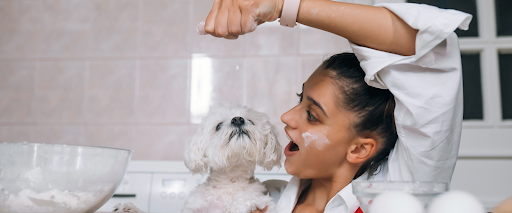
FAQ
How often should I bathe a dog with allergies?
Bathe your dog every 4-8 weeks, depending on their allergies and vet recommendations. Over-bathing can dry out their skin, so stick to a schedule that keeps their coat clean without stripping oils.
What’s the best shampoo for bathing allergic dogs?
Choose an allergy-safe dog shampoo with natural ingredients like oatmeal or aloe vera. Avoid products with artificial fragrances or dyes, and always consult your vet for personalized advice.
Can I use human shampoo on my dog with allergies?
No, human shampoos are too harsh for dogs and can worsen allergies. Stick to hypoallergenic dog bath tips using shampoos made for sensitive canine skin.
How can I tell if my dog’s skin is irritated after a bath?
Look for redness, excessive scratching, or flaky skin. If you notice these signs, contact your vet and consider switching to a gentler sensitive skin dog grooming product.
Keep Your Dog Comfortable and Clean
Allergic dogs don’t have to suffer through uncomfortable skin problems. With the right approach, bath time can actually bring relief instead of stress. Gentle products, careful techniques, and professional grooming support all play a role in keeping skin calm and coats clean. Services tailored for sensitive pets make a noticeable difference, helping to reduce irritation and prevent flare-ups.
If your dog struggles with allergies,
schedule a grooming session with Happy Hounds Mobile Pet Grooming. With patience and consistent care, it becomes much easier to bathe a dog with allergies in a way that keeps them comfortable and healthy.


